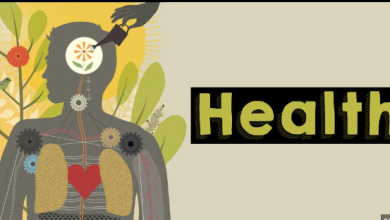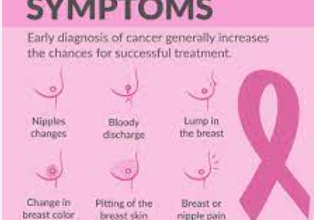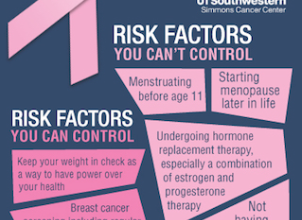Breast Cancer Symptoms And Causes

. Introduction
- A. Brief overview of breast cancer
- B. Importance of understanding symptoms and causes
. Understanding Breast Cancer
- A. Definition of breast cancer
- B. Types of breast cancer
- C. Incidence and prevalence statistics
. Symptoms of Breast Cancer
- A. Early signs and detection
- B. Common symptoms to look out for
- C. Importance of regular self-exams and mammograms
. Causes of Breast Cancer
- A. Genetic factors
- B. Hormonal influences
- C. Environmental factors
- D. Lifestyle choices
. Risk Factors
- A. Age and gender
- B. Family history
- C. Hormone replacement therapy
- D. Personal health habits
. Diagnosis and Staging
- A. Screening and diagnostic procedures
- B. Staging of breast cancer
. Treatment Options
- A. Surgery
- B. Radiation therapy
- C. Chemotherapy
- D. Hormone therapy
- E. Targeted therapy
. Coping with Breast Cancer
- A. Emotional and psychological aspects
- B. Support networks
- C. Lifestyle adjustments
. Prevention and Early Detection
- A. Importance of lifestyle changes
- B. Regular screenings and check-ups
. Public Awareness and Advocacy
- A. The role of awareness campaigns
- B. Supporting breast cancer research
. Real Stories of Survivorship
- A. Personal accounts of overcoming breast cancer
- B. Inspiring narratives to encourage hope
. Conclusion
- A. Summarize key points
- B. Emphasize the significance of early detection and awareness
. FAQs
- A. How common is breast cancer?
- B. Can men get breast cancer?
- C. What lifestyle changes can reduce the risk?
- D. Are all breast lumps cancerous?
- E. How often should women get mammograms?

Breast Cancer Symptoms and Causes
Breast cancer is a formidable adversary that affects millions of lives globally. Understanding its symptoms and causes is crucial for early detection and effective management. In this article, we delve into the intricacies of breast cancer, exploring everything from its definition to treatment options and real stories of survivorship.
I. Introduction
A. Brief Overview of Breast Cancer
Breast cancer is a type of cancer that originates in the cells of the breast. It can occur in both men and women but is far more common in the latter. The impact of breast cancer extends beyond the physical, affecting emotional and psychological well-being.
B. Importance of Understanding Symptoms and Causes
In the fight against breast cancer, knowledge is power. Recognizing the symptoms early and understanding the causes can lead to timely interventions, significantly improving outcomes. This article aims to equip readers with comprehensive insights into breast cancer symptoms and causes.
II. Understanding Breast Cancer
A. Definition of Breast Cancer
At its core, breast cancer is the uncontrolled growth of abnormal cells in the breast tissues. These cells can form a tumor that may be benign (non-cancerous) or malignant (cancerous).
B. Types of Breast Cancer
Breast cancer is not a singular entity; it encompasses various types. The two primary categories are invasive and non-invasive (in situ). Within these categories, subtypes like ductal carcinoma in situ (DCIS) and invasive lobular carcinoma exist, each requiring a tailored approach to treatment.
C. Incidence and Prevalence Statistics
Breast cancer is a global health concern, with millions of new cases reported annually. Understanding the prevalence and incidence of the disease provides a broader perspective on its impact and the need for widespread awareness.
III. Symptoms of Breast Cancer
A. Early Signs and Detection
Early detection significantly improves the chances of successful treatment. Recognizing the initial signs, such as changes in breast size, shape, or the presence of lumps, is paramount.
B. Common Symptoms to Look Out For
Beyond lumps, symptoms may include nipple changes, skin changes, and unexplained pain. Awareness of these signs empowers individuals to seek medical attention promptly.
C. Importance of Regular Self-exams and Mammograms
Regular self-examinations and mammograms play a pivotal role in early detection. Educating individuals on the importance of these practices fosters a proactive approach to breast health.
IV. Causes of Breast Cancer
A. Genetic Factors
While not all breast cancers have a hereditary component, some result from gene mutations inherited from family members. Understanding genetic risk factors is crucial for personalized risk assessment.
B. Hormonal Influences
Hormones, especially estrogen and progesterone, can influence the development of breast cancer. Exploring the link between hormonal factors and breast cancer provides insights into preventive measures.
C. Environmental Factors
Environmental exposures to certain substances may contribute to breast cancer risk. Investigating these factors sheds light on potential avenues for prevention.
D. Lifestyle Choices
Certain lifestyle choices, such as diet, exercise, and alcohol consumption, can impact breast cancer risk. Encouraging healthy habits becomes a key component of prevention.
V. Risk Factors
A. Age and Gender
Age and gender play significant roles in breast cancer risk. Women over 50 face an increased likelihood, and while rare, men can also develop breast cancer.
B. Family History
A family history of breast cancer can elevate the risk for individuals. Genetic counseling may be beneficial for those with a familial predisposition.
C. Hormone Replacement Therapy
Hormone replacement therapy (HRT) can influence breast cancer risk. Evaluating the pros and cons of HRT is essential for postmenopausal women considering this treatment.
D. Personal Health Habits
Individual choices, such as smoking and sedentary lifestyles, can contribute to overall health and impact breast cancer risk. Promoting positive habits can mitigate these risks.
VI. Diagnosis and Staging
A. Screening and Diagnostic Procedures
Screening methods, including mammography and breast MRIs, aid in the early detection of breast cancer. Understanding diagnostic procedures ensures informed decision-making.
B. Staging of Breast Cancer
Staging determines the extent of cancer spread, guiding treatment decisions. From Stage 0 to Stage IV, each stage requires a tailored approach for the best possible outcome.
VII. Treatment Options
A. Surgery
Surgical interventions, such as lumpectomy or mastectomy, are common in treating breast cancer. The choice depends on factors like tumor size and location.
B. Radiation Therapy
Radiation therapy targets cancer cells with high precision, reducing the risk of recurrence. Its role in post-surgical treatments is pivotal.
C. Chemotherapy
Chemotherapy utilizes drugs to eradicate cancer cells throughout the body. Understanding its potential side effects and benefits is crucial for patients.
D. Hormone Therapy
Hormone therapy targets hormone receptor-positive breast cancers, inhibiting hormonal influences on tumor




